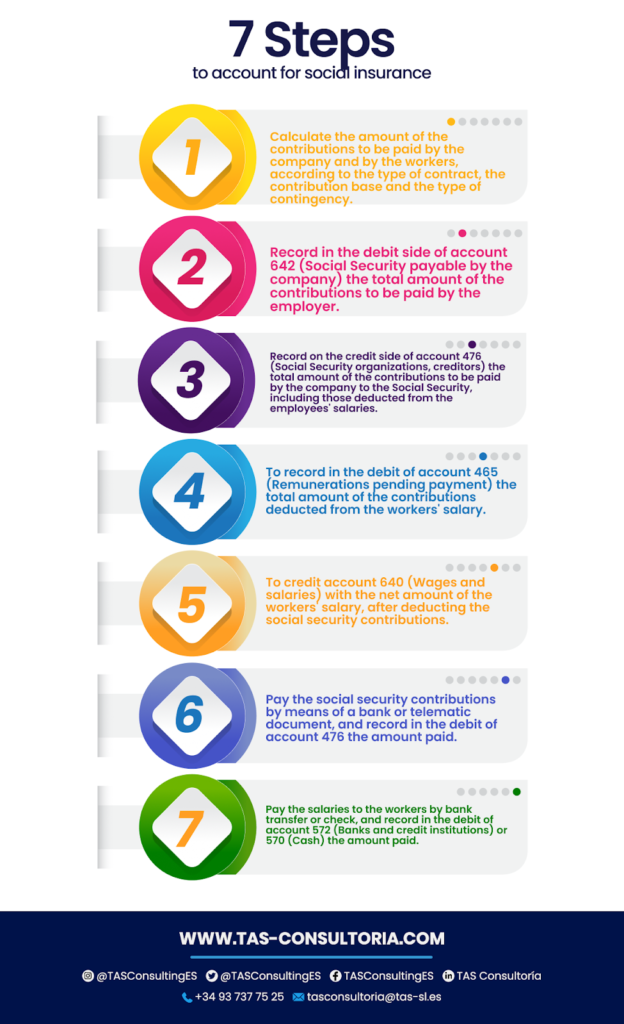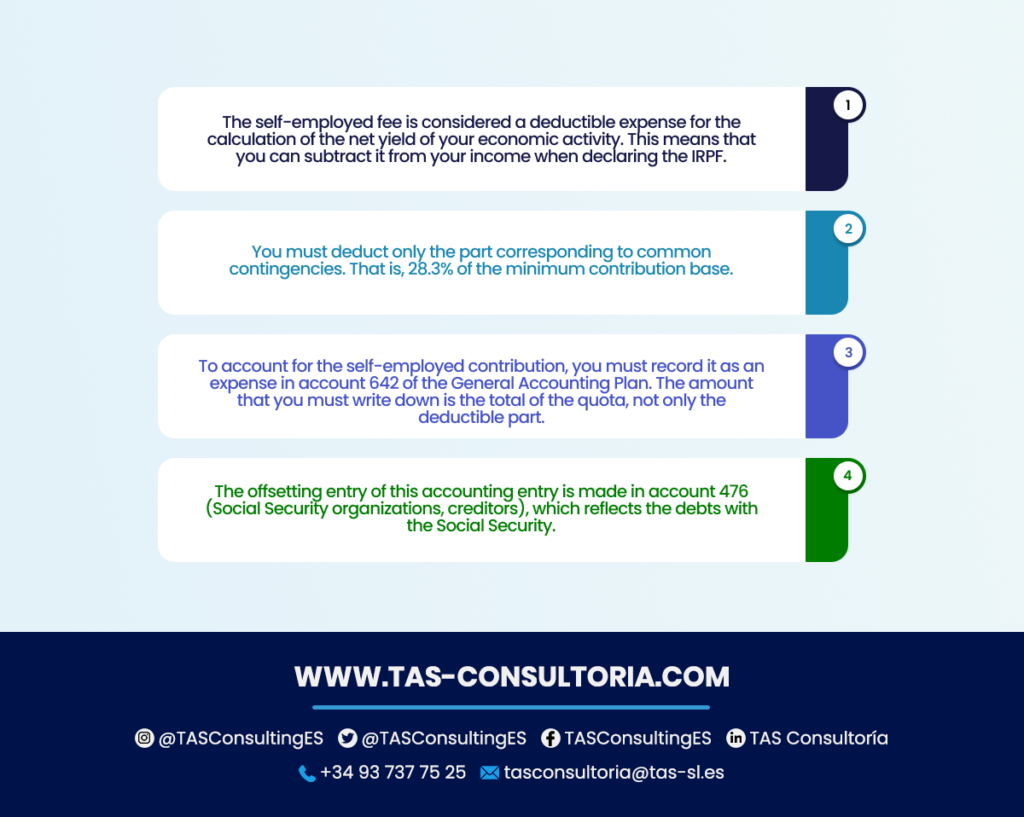
The task of account for social insurance is common among companies and entrepreneurs with employees under their charge. Each month, insurance contributions are credited to each employee’s paycheck. Do you have employees under your care and are interested in knowing how to account for their social security contributions? Then this article is for you, join us!
What does the task of accounting for your employees’ social security contributions involve?
Employers and workers pay a contribution called social insurance to the Social Security. Thanks to this, it is possible to finance the entire social protection system.
In this sense, account for social insurance means recording the amounts of these contributions in the company’s accounts. Both those borne by the employer and those deducted from the employee’s salary.
The General Accounting Plan uses specific accounts to perform this work. This makes it possible to differentiate between the company’s payment obligations and the SS’s collection rights.
When these fees are accrued and paid, it is important to take them into account. Additionally, any possible bonuses or surcharges that may be applied should also be considered.
You may also be interested in: Taking out insurance for foreigners in Spain
How does social security accounting work?
The account for social insurance consists of recording the transactions related to these benefits. This applies to both the public and private sectors.
The Social Security General Treasury is responsible for social security accounting in the public sector. This is the body in charge of collecting contributions and paying benefits. Thus, the TGSS keeps the financial and national accounts. The State integrates the latter into its public accounts.
Companies and self-employed workers perform social security accounting in the private sector. They must reflect in their books and financial statements the obligations and rights arising from their relationship with the SS.
7 steps to post social security
The process of account for social insurance is a meticulous task that involves several steps and effort on the part of the companies. Here are the 7 main steps that must be followed.

With these steps, it is possible to reflect in the accounting both the labor cost of having hired workers. And not only that, but also the fulfillment of your obligations with the Social Security and the employees.
You may also be interested in: How to invoice foreign customers from Spain?
Who pays social security contributions?
In order to account for social insurance, it is necessary to know the obligations that your company must comply with and the responsibilities of the workers. The payment of social security not only occurs on behalf of the companies (employer’s contribution), it is also a burden for the worker (worker’s contribution).
Therefore, we will describe below what each installment is and the characteristics of each one.
Employer’s contribution
This is the monthly amount paid by a company or individual entrepreneur as a social security contribution. It must be paid for the fact of having one or more employees.
Different percentages are applied to the employee’s contribution base to calculate it. Thus, it will depend on his gross salary and the professional group to which he belongs.
Account 642 is a debit account where such contribution is recorded. The latter includes the contributions that companies must pay to social security agencies as a result of the services they provide.
It also covers different concepts, such as common contingencies, professional contingencies, unemployment, FOGASA, professional training and overtime. Below is a breakdown of the percentages associated with each concept:
- Common contingencies: 23.60%.
- Occupational accidents and occupational diseases: between 1.5% and 7.15%.
- Unemployment: 0.50%.
- FOGASA: 0.20%.
In short, social security contributions account for 30% or more of the gross salary paid by companies.
Worker’s quota
This is the percentage deducted from the gross salary of workers to finance Social Security. This contribution is divided into two parts:
- Contribution for common contingencies. This refers to situations that are not related to work: retirement, permanent disability or maternity.
- Contribution for professional contingencies. These are work-related situations, such as occupational accidents or occupational diseases.
This contribution is calculated by applying percentages to the contribution base. That is, the worker’s gross monthly salary with a maximum and minimum limit. The percentages vary according to the type of contract, contribution group and economic activity. That said, the breakdown of these percentages is as follows:
- Common contingency: 4.70%.
- Unemployment: 1.55%.
- Vocational training: 0.1%.
The workers’ contribution is paid monthly together with the net salary. The employer is responsible for withholding it and paying it to the Social Security General Treasury.
4 steps to account for social insurance if you are self-employed
If you are self-employed, you should know that you are obliged to pay Social Security contributions for your professional activity. This means that you must pay monthly contributions, which vary depending on your contribution base and the types of coverage you choose. We explain how to do it correctly and easily:

If you follow these steps, you will correctly account for your self-employed fee and you will be able to deduct it in your income tax return. Also, you must remember to keep the receipts of the payment of the quota to be able to justify it before the Treasury in case of an inspection.
You may also be interested in: Collaborative accounting: what is it and what does it consist of?
Do you need to account for your employees’ social insurances and you don’t know how to do it? In TAS Consulting we have the best accounting and tax advisors capable of guiding you through this process. Contact us through tasconsultoria@tas-sl.es and schedule your personalized advice.
If you want to subscribe to our content library and find out all the latest news from the business world.




Your email address will not be published .
Required fields are marked with *